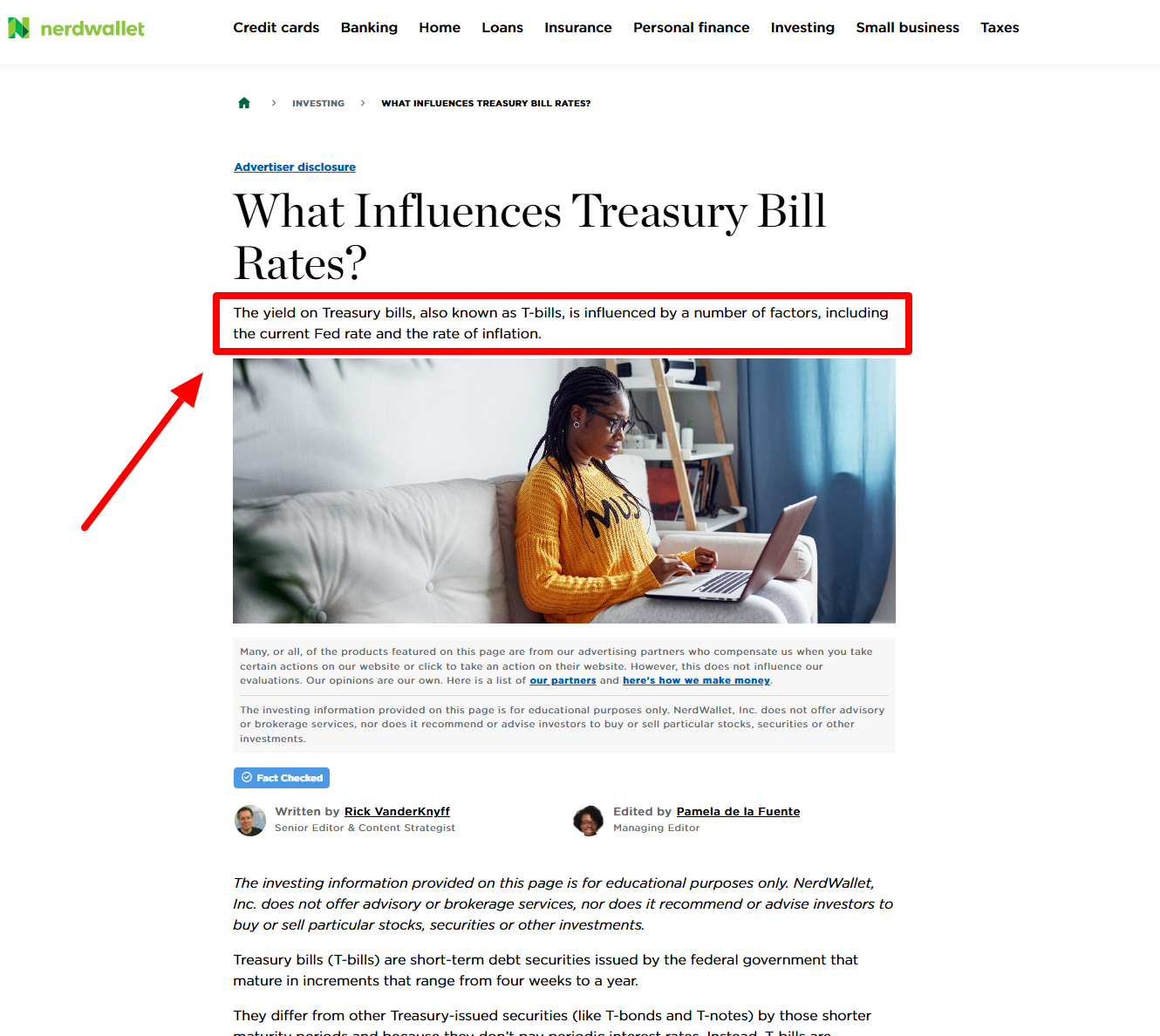You may have noticed your organic traffic looking different lately. Rankings fluctuate wildly, your content appears in AI summaries one week and vanishes the next, and users are increasingly getting their answers without ever visiting your website.
When 58.5% of searches end without a click, that carefully optimized content you spent weeks perfecting might be feeding AI answers instead of driving traffic to your site.
We’re witnessing the biggest shift in search since Google’s early days. Traditional SEO tactics aren’t enough anymore.
You need a strategy that works when AI systems become the middleman between your content and your audience.
Table of Contents
The New Search Reality: AI Is Eating Your Clicks
Let’s be honest about what’s happening.
Google’s AI Overviews now appear for over 11% of all searches according to BrightEdge research, pulling information from multiple sources to create comprehensive answers above your organic results. Users get what they need without clicking through.
But, it’s not just Google. Perplexity processes over 780 million searches monthly, while ChatGPT’s browsing feature handles complex queries that users used to need multiple website visits to answer.
Your Content Is Working, Just Not How You Expected
Here’s what’s particularly frustrating: Your content is often powering these AI responses, but you’re not getting credit or traffic for it.
Search for [email automation] on Google and you’ll see a comprehensive AI Overview that defines the concept, explains how it works in four detailed steps, lists benefits, provides examples, and even mentions specific tools like ActiveCampaign and Mailchimp.
This response synthesizes information from multiple sources into one complete answer that eliminates the need to visit any individual website.
The user gets a definition, step-by-step process, benefits, examples, and tool recommendations all in one place.
Meanwhile, the original content creators who researched and wrote about email automation triggers, personalization strategies, and platform comparisons see their expertise repackaged without receiving the traffic they would have earned from traditional search results.
 Screenshot from search for [email automation], Google, July 2025
Screenshot from search for [email automation], Google, July 2025Zero-click searches aren’t killing SEO; they’re evolving it. Your content needs to work harder in this new environment.
What Marketers Need To Rethink
Forget everything you know about traditional SEO success metrics. The game has fundamentally changed.
Shift Your Focus: From Rankings To Mentions
That coveted No. 1 ranking? While still valuable, it’s becoming less reliable for driving traffic when AI systems deliver answers directly to users.
Your content increasingly competes to be cited by AI alongside traditional ranking factors.
Rankings still matter, especially for commercial queries where users want to browse options. But, for informational searches where users seek quick answers, your content’s value now extends beyond its position in organic results.
Being featured in an AI Overview from position No. 7 can deliver more brand exposure than ranking No. 3 without AI inclusion.
Think about it this way: When someone asks ChatGPT or Google AI Mode about your industry, does your brand get mentioned? That’s your new battleground.
Your New Success Metrics
Instead of obsessing over click-through rates, you need to start tracking metrics that capture AI influence on your brand:
- Brand mentions in AI responses across platforms tell you whether your content is being cited and referenced.
- Branded search volume spikes often follow AI feature appearances.
- Conversion assists where organic search was part of the user’s journey but not the final touchpoint.
- Customer surveys asking, “How did you hear about us?” reveal AI influence that analytics can’t capture.
I’ve seen clients with flat traffic numbers but 200% increases in brand mentions in AI responses. That’s invisible growth that traditional analytics miss entirely.
Practical Strategies That Work
Here’s how to adapt your SEO approach for AI-powered search. These are strategies I’ve tested with clients across different industries.
Make Your Content AI-Friendly
The most important shift you can make is structuring your content for AI comprehension.
Place your main answer within the first one to two sentences of any piece of content. Think of it like writing a news article where the lead paragraph contains all the crucial information.
If someone asks, “What are the benefits of meditation?” your opening should be, “Meditation reduces stress, improves focus, and enhances emotional well-being through regular practice.” Then expand with details, examples, and supporting evidence.
Look at this great example from NerdWallet:
 Screenshot from NerdWallet, July 2025
Screenshot from NerdWallet, July 2025This approach serves both human readers who want quick answers and AI systems that prioritize clear, immediate responses. When Google’s AI Overview or ChatGPT pulls from your content, that opening statement becomes your brand’s voice in the answer.
I’ve seen this strategy increase AI citation rates by 40% for clients who consistently implement it.
Key formatting strategies that work:
- Structured formats: Transform dense paragraphs into FAQs, numbered lists, and tables that AI can easily parse.
- Schema markup: Use schema.org vocabulary to help large language models (LLMs) understand relationships between information on your site.
- Clear headings: Create content hierarchy with H2 and H3 headings that AI can follow.
A well-structured FAQ section doesn’t just help users. It becomes a goldmine for AI systems looking for clear question-answer pairs.
Consider transforming complex pricing information into tables rather than burying details in lengthy paragraphs.
Build Citation-Worthy Authority
Creating content that AI systems want to reference requires a fundamental shift from aggregating existing information to generating original insights.
Publish studies, proprietary data, and exclusive interviews that can only come from your organization.
LLMs prioritize original sources over aggregated information, making your research significantly more likely to be cited and attributed.
Instead of stating facts directly, frame them as insights from your organization. “According to our research at [Company Name]” or “Based on our analysis of 10,000 customer surveys” signals to AI systems that the information comes from a specific, credible source.
This technique helps ensure that when LLMs pull information from your content, they’re more likely to include your brand name in the response.
Building topical authority through comprehensive content clusters is more important than ever. Create interconnected content that thoroughly covers your expertise area from multiple angles.
If you’re in the gardening space, don’t just write one article about composting. Create a comprehensive resource covering composting basics, troubleshooting common problems, seasonal considerations, and advanced techniques, then link these pieces together strategically.
This clustering approach works because LLMs assess credibility partly based on depth and breadth of coverage.
Sites that demonstrate comprehensive knowledge on topics are more likely to be seen as authoritative sources worth citing.
I’ve watched brands jump from occasional mentions to consistent AI citations by implementing this strategy over six to 12 months.
Diversify Beyond Traditional Search
Don’t put all your eggs in the Google basket. AI systems pull information from diverse sources, and expanding your content distribution increases your chances of being included in LLM training data and responses.
Recent research from Ahrefs analyzing 78.6 million AI responses across Google AI Overviews, ChatGPT, and Perplexity reveals which platforms get cited most frequently.
The data shows clear patterns in what each AI system prefers to reference.
Platforms worth prioritizing based on AI citation data:
- YouTube: Dominates Perplexity citations (16.1% mention share) and ranks high in AI Overviews (9.5%), making video content crucial for AI visibility.
- Reddit: Heavily favored by Google AI Overviews (7.4% mention share) but absent from ChatGPT and Perplexity’s top citations.
- News and industry publications: ChatGPT shows a strong preference for news outlets like Reuters and Apple News, making media coverage valuable.
- Wikipedia: Leads citations across all three platforms, emphasizing the importance of having your brand or expertise documented on authoritative reference sites.
The research reveals that different AI systems have distinct preferences.
Google’s AI Overviews favor user-generated content from Reddit and Quora, while ChatGPT prioritizes news sources and authoritative publications.
Perplexity shows the strongest preference for YouTube content alongside Wikipedia.
Each platform has its own content style and audience, so adapt your messaging accordingly.
A LinkedIn post about industry trends might become a source for business-related AI responses, while a YouTube video explanation could be referenced for educational queries.
The key is maintaining consistent expertise and messaging across all channels.
Testing your content directly in different AI platforms gives you immediate feedback on how it’s being interpreted and used.
Ask ChatGPT questions related to your expertise and see if your content appears in the responses. Query Perplexity about industry topics you’ve covered.
This direct testing helps you understand how different AI systems process and present your information, allowing you to refine your approach based on real results.
Measuring Success In A Post-Click World
Traditional metrics aren’t telling the whole story anymore, and honestly, this is where most marketers struggle with the transition to AI-era SEO.
You’re used to clear, quantifiable metrics like organic traffic and click-through rates. Now you need to track influence that often happens without any direct interaction with your website.
Track AI Visibility Across Platforms
Start by monitoring featured snippets and AI Overview inclusions. These placements often indicate that AI systems are pulling from your content, even if they don’t generate the clicks you’re used to seeing.
Set up alerts for when your content gets featured because these appearances frequently correlate with increases in branded search volume and direct traffic.
Check if your brand appears when users ask AI tools about your industry. Search for your company name in ChatGPT, Perplexity, and Google’s AI Overview to see how you’re being represented.
You might discover that your brand is being mentioned in contexts you didn’t expect, giving you insights into how AI systems perceive your authority.
Social media monitoring becomes more important in this landscape because people often discuss insights they learned from AI summaries.
Set up tracking for mentions where people reference concepts or data points that originally came from your content, even if they don’t directly cite your brand.
These conversations indicate that your content is influencing discussions, even when traditional attribution models miss the connection.
Attribution Modeling For Invisible Influence
The challenge with zero-click searches is that they force you to rethink how you measure content success.
A user might read your advice in an AI summary today, then visit your site directly next week after remembering your brand name. Traditional last-click attribution completely misses this connection, making your SEO efforts appear less valuable than they actually are.
Implement first-touch attribution models that credit SEO for starting customer journeys, even when other channels complete the conversion.
Survey your new customers about how they first discovered your brand, and you’ll often find they mention seeing your content in search results or AI responses weeks before converting. This qualitative data fills in gaps that analytics can’t capture.
Look for patterns where direct traffic increases after your content gets featured in AI responses. Create custom UTM parameters for content that frequently appears in AI summaries.
While you can’t track every citation, you can identify trends in how AI-discovered content influences broader marketing performance.
Watch for increases in newsletter signups, demo requests, or branded searches following AI feature appearances.
Google Analytics 4’s attribution modeling can help you understand these multitouch journeys better than previous versions. Configure it to show conversion assists where organic search was part of the user’s path but not the final touchpoint.
This reveals the true value of your SEO efforts in an environment where direct attribution becomes increasingly difficult.
Tools And Techniques For Modern Measurement
SparkToro helps you understand where your audience discovers content and which sources they trust.
Use it to identify if your brand is being mentioned in the same contexts as industry leaders, indicating you’re gaining mindshare even without direct clicks.
This competitive intelligence reveals whether your AI strategy is working compared to others in your space.
Beyond traditional tools, create a systematic monitoring approach using multiple AI platforms.
Set up monthly checks to see if your citation frequency is increasing and which topics generate the most AI references.
Document examples of how your content gets referenced and summarized to understand what formats work best.
Remember that influence in AI responses often correlates with long-term brand growth, even if immediate traffic metrics look flat.
While comprehensive research on AI citation impact is still emerging, the pattern mirrors what we’ve seen with other “zero-click” features like featured snippets, brand exposure through authoritative citations can drive awareness and consideration that results in direct searches and conversions over time.
The key is connecting these invisible influences to eventual business outcomes.
Building Long-Term Resilience In An AI-First World
The brands that thrive in this new landscape will not just adapt to current changes.
They will anticipate what comes next and build systems that can weather the unprecedented volatility that AI-powered search brings.
Prepare For AI Volatility
Traditional core Google algorithm updates happen a few times per year and usually follow predictable patterns.
With each model update, LLMs can change their behavior, creating unprecedented volatility in search visibility that most SEO professionals haven’t experienced before.
Your content might appear in ChatGPT responses one week and disappear the next. This isn’t a bug or a penalty. It’s how LLMs work.
They constantly learn and adjust their understanding of what constitutes authoritative information based on new training data and updated models.
Instead of panicking over daily fluctuations, track broader patterns in brand mentions, branded search volume, and conversion trends.
These metrics provide more stable indicators of your content’s impact than individual AI citations, which can vary significantly based on model updates and algorithmic adjustments.
Your brand needs to be what I call “retypeable,” the kind of name people remember and search for when they’re ready to take action.
When users encounter your brand in an AI summary, they should immediately associate it with your core value proposition and remember it later when they’re ready to engage.
Build Flexible Systems
Set up processes to review and refresh your most important pages quarterly.
LLMs prioritize current information more heavily than traditional search engines, so maintaining content freshness becomes critical for sustained AI visibility.
Develop relationships with other authoritative sources in your industry through collaborations, partnerships, and cross-references.
The more your brand appears in connection with recognized authorities, the stronger your credibility signals become for AI systems.
These relationships create natural mentions across different content formats and platforms that extend beyond what you can control directly.
The Future Of SEO Is About Influence, Not Clicks
The shift to AI-powered search is changing not just how people find information but also how brands build authority and trust.
Companies that recognize this early and adapt their strategies accordingly will own the conversation in their industries, while others struggle to understand why their traditional SEO efforts aren’t delivering the same results.
Your content is still working. It’s influencing decisions, building brand awareness, and driving conversions.
You just need new ways to measure and optimize for its impact in an environment where visibility doesn’t always equal clicks, but influence still equals business growth.
More Resources:
- Brand Bias For Visibility In Search & LLMs: A Conversation With Stephen Kenwright
- How To Maintain Brand Visibility And Thrive As Search Evolves
- SEO In The Age Of AI
Featured Image: LariBat/Shutterstock


